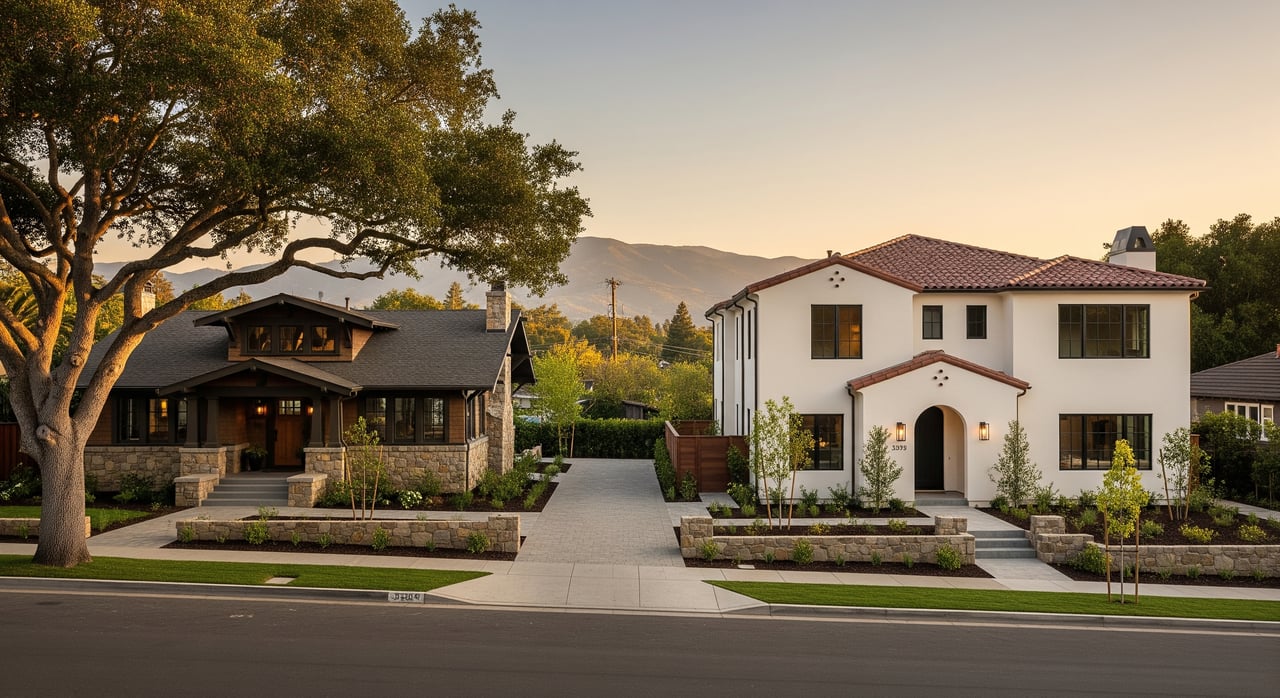|
We have welcomed Autumn and as we gear up for the final stretch of the year we look forward to the holiday season. A few of our favorite things to do in the Los Gatos area this time of year.
And if you’re in Santa Cruz check out…
|
|
Now for an update on the last 3 months and how we’re anticipating the end of the year to unfold.
Interest RatesAfter our previous newsletter where we reported on the Federal Reserve's decision to take a pause from rate hikes in June, we did see another 25 bps hike on July 26th bringing the Federal Funds Rate (FFR) to its current level 5.25%-5.50%. It's clear now that the Federal Open Market Committee (FOMC) was allowing time to monitor their recent efforts before raising rates further. With June 2022 having reported the highest inflation data in 40 years, the committee needed additional context to better understand the year over year (YoY) data and the current inflation trend. However, despite further data supporting the FOMC’s efforts in combating inflation, and nonfarm payrolls (considered a leading indicator on the economy) being revised downward for the sixth straight month, they did decide to hike again in late July.
|
 |
|
The recent meeting in September seemed to reflect greater consideration of this data as the FOMC decided not to hike rates for only the second time this year. This pause was widely anticipated by the market but what was closely monitored was Powell’s verbiage when discussing his outlook of the economy. He was quoted, “We want to see convincing evidence really that we have reached the appropriate level, and we’re seeing progress and we welcome that. But, you know, we need to see more progress before we’ll be willing to reach that conclusion.” In summary, he foresees a soft landing in our future all while acknowledging the work left to do in order to achieve price stability. The latest Job Openings and Labor Turnover Survey (JOLTS) report indicates that the labor market is still robust and shows no signs of weakening. While a cooling labor market was anticipated, the August data on job openings revealed a significant increase in available positions. Non-Farm Payrolls (NFP) report also surprised with higher-than-expected numbers, this means it is likely that Wall Street will soon begin to fully factor in the possibility of at least one additional Federal Reserve interest rate hike before the year's end. As I’m writing this newsletter conventional mortgage rates have exceeded 8% which puts us at near 23 year highs. The surge in interest rates can be attributed to a growing consensus that rates will remain elevated for an extended period. This belief is not limited to a single entity (U.S.) but seems to be widely accepted. As our interest rates continue to climb with no imminent signs of a decline, the value of the U.S. dollar strengthens in tandem. This dynamic presents a challenge for foreign central banks, as their currencies weaken against the strong dollar. One effective strategy for bolstering a currency is to create demand for it, thereby increasing its value. Another, even more effective approach is to divest assets in the currency you are weak against and reinvest the proceeds in your own currency. Currently, this intricate dance is unfolding. Foreign central banks (primarily Japan and China) are strategically divesting their US Treasury holdings to purchase their own currencies. This dual action not only diminishes the strength of the U.S. dollar but also raises the value of their respective currencies. Simultaneously, with the current deficit the US continues to raise money through the issuing of securities (i.e. bills, notes, bonds and Treasury inflation-protected securities). This shift in foreign central bank behavior exerts upward pressure on the U.S. Treasury yields bringing mortgage rates along for the ride. We have noted in the past that the Federal Funds Rate does not directly affect mortgage rates, but instead mortgage rates loosely follow the 10-year treasury. With risk free rates pushing upwards of 5% and 16 year highs, we see mortgage rates reaching 23 year highs. How is this affecting buyer demand? |
 |
|
Buyer demand nationing is measured by new mortgage applications. As you can see more and more buyers are deciding to put off homeownership, nationally we are down 50% from the start of the year. Affordability continues to be in question as prices have not adjusted enough (or at all) to account for this increase in borrowing costs. Supply LevelsSo how are home prices remaining strong while interest rates continue to climb? Higher interest rates continue to constrain supply keeping inventory levels at record lows across the country and certainly here in the Bay Area. We’ve been using this term since Q4 2022 and it's now been picked up by most mainstream reporting, the “Lock-in Effect.” Homeowners remain reluctant to sell as long as purchasing a new home continues to be met with higher costs. From a seasonal perspective, summer typically brings a lull as most families put off their home search in exchange for getting their kids ready for the school year. As a result, sellers are often instructed by their real estate professionals to wait until after labor day to list their home. |
 |
|
As we look back at YoY figures in Q3 it's important to remember what was happening a year ago. We saw three consecutive 75 bps rate increases from June 2022 to September 2022 and the market had essentially reached a standstill by early fall. This rapid shift in federal monetary policy was a result of the June 2022 inflation prints which in some cases exceeded 9%. This period was followed by a fourth 75 bps increase in November. So although our 2023 inventory levels have remained low and nearly unchanged throughout the year, the number of new listings being added to the market this time last year was decreasing drastically (compressing the Delta). As we mentioned back in January of 2022, we felt Higher for Longer was the clear messaging moving forward and this was certainly at the forefront of Powell’s latest speech at the recent Fed meeting. I do not foresee a sizable increase in residential inventory in coming months, if anything I believe we will see a seasonal low. This includes foreclosures as total home equity hit over $16 trillion earlier this year with tappable equity, which is the amount most lenders will allow you to take out while still leaving 20% equity in the home, rising to $10.5 trillion, just 4% off its 2022 peak. These record low inventory levels are likely to stabilize prices through the end of the year. |
 |
The American DreamThis next section was provided by Kyle Kovats, a fellow National Association Of Realtors 30 under 30 out of New Jersey, a General Partner and Limited Partner in a number of Multifamily syndications and the author of Middle Class To Multi-Millionaire. Kyle first inspired me at a Mastermind conference back in 2022 where you could clearly get a sense of not only his intelligence but his ability to share important information through story. I am going to adjust his example to be more relatable to our Silicon Valley market rather than posting his figures which are relevant to his local market. $353,500 | That is the income required of a household to buy a standard 3-bedroom starter home today in San Jose, the heart of Silicon Valley. To put this into perspective in San Jose, a modest city in the larger Silicon Valley, your standard good condition 3 bedroom starter home is now about $1,594,000. We’ll assume these first time homebuyers were able to obtain a 20% downpayment ($318,800) and avoid PMI, as in our competitive environment it is a challenge to get an offer with less than 20% down accepted (Quick Fact: In 2023, the San Jose metro area has the highest typical down payment size nationwide). This would imply with mortgage rates at 7.5% that your monthly payment between principal, interest, property taxes (1.2% of purchase price) and homeowners insurance is $10,605. Since everyone's debt to income ratio will be different I used the a front end ratio* calculation of Jumbo lenders qualifying you typically around a max of your monthly payment being no more than 36% of your gross income. What did the results show? The results showed that you’d have to make over three hundred and fifty thousand and dollars a year, $353,500 to be exact, to qualify to buy a 3 bedroom starter home in San Jose, CA with 20% down. Only 15.1% of households in California make over $200,000, and that's ALL households of all ages. I cannot find data on the number but you'd have to imagine it's a significantly lesser portion of your typical first time home buyer age. *When looking into your qualifications it is more important to look at the back end DTI calculation. This includes all of your debt obligations and should be below 43% for Jumbo loans and below 50% for Conforming loans. Please don’t hesitate to reach out as we can introduce you to seasoned mortgage providers who can better assist you with your application. What are the consequences here?
In summary, the struggle continues to be the barrier to entry. Current property values are within 5% of their 2022 peaks and we have seen four consecutive months of YoY appreciation. Our conversations with those looking to acquire real estate continue to be centered around 2-1 Buydowns and Adjustable Rate Mortgages (ARMS) with intentions of a refinance in the next 18-24 months. Will rates be at 3-4% by then? Highly unlikely. However, history tells us that rate cuts typically begin 9 months from the pause. I would rather get in at today's value than compete with the largest demographic of 30-35 year olds (household formation years) in the US, since the baby boomers, when rates come down to ~5%. Not to mention the largest transfer of wealth the world has ever seen. |




